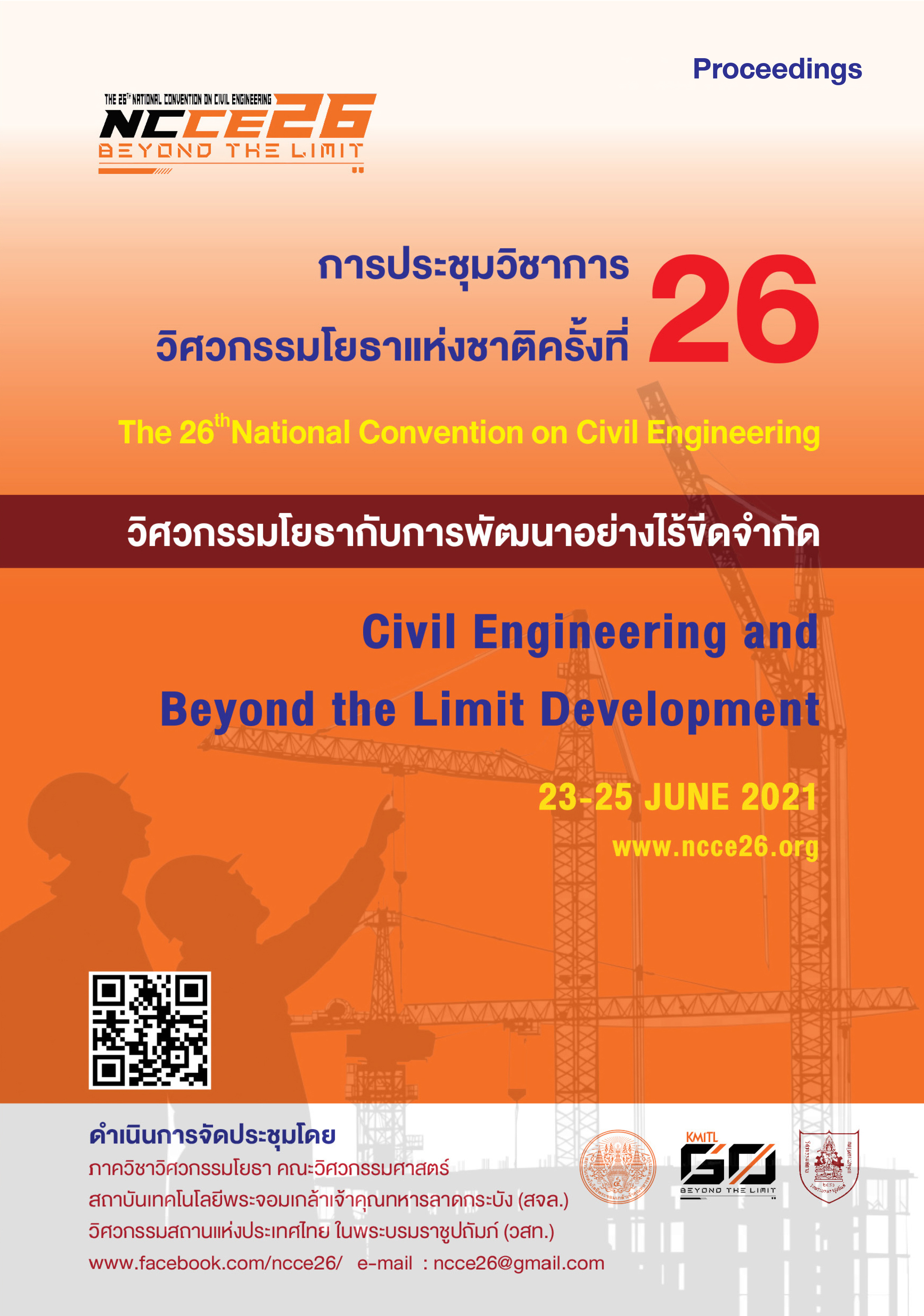Analysis of a Workshop Building Damaged by Expansive Soil in Mae Moh, Lampang Province
Abstract
This article presents an analysis of a damaged workshop building in Mae Moh District, Lampang Province. Walls and ground slabs occurred all over the building. The most significant problem was a traveling crane could not move along its supporting runway beams due to their excessive buckling. The investigation from 2002-2020 revealed the increase in differential uplift of runway beams. An excavation beside a pile cap revealed a pile with tensile crack. Soil samples were taken from boreholes around the building. An XRD examination on the soil samples found some Montmorillonite which was an important component causing the swelling or extraction of the soil when its moisture content changed. The soil was identified as clay with high potential of swelling from free swell test and swell pressure test. Eventually, the conclusion of the analysis was that the damages of this building were caused by three major issues: 1) the building was designed to be seated directly on the expansive soil layers without any space for the soil to swell freely, 2) the length of the supporting piles was not enough to resist the uplift force induced by the heaving soil, and 3) a small reservoir built near the building was the possible source of the moisture migrated in to the expansive soil. In addition, the result from swell pressure test hints that the soil underneath the building still keep on swelling.
Downloads
Downloads
Published
How to Cite
Issue
Section
License
บทความทั้งหมดที่ได้รับการคัดเลือกให้นำเสนอผลงานในการประชุมวิชาการวิศวกรรมโยธาแห่งชาติ ครั้งที่ 26 นี้ เป็นลิขสิทธิ์ของ วิศวกรรมสถานแห่งประเทศไทย ในพระบรมราชูปถัมภ์



